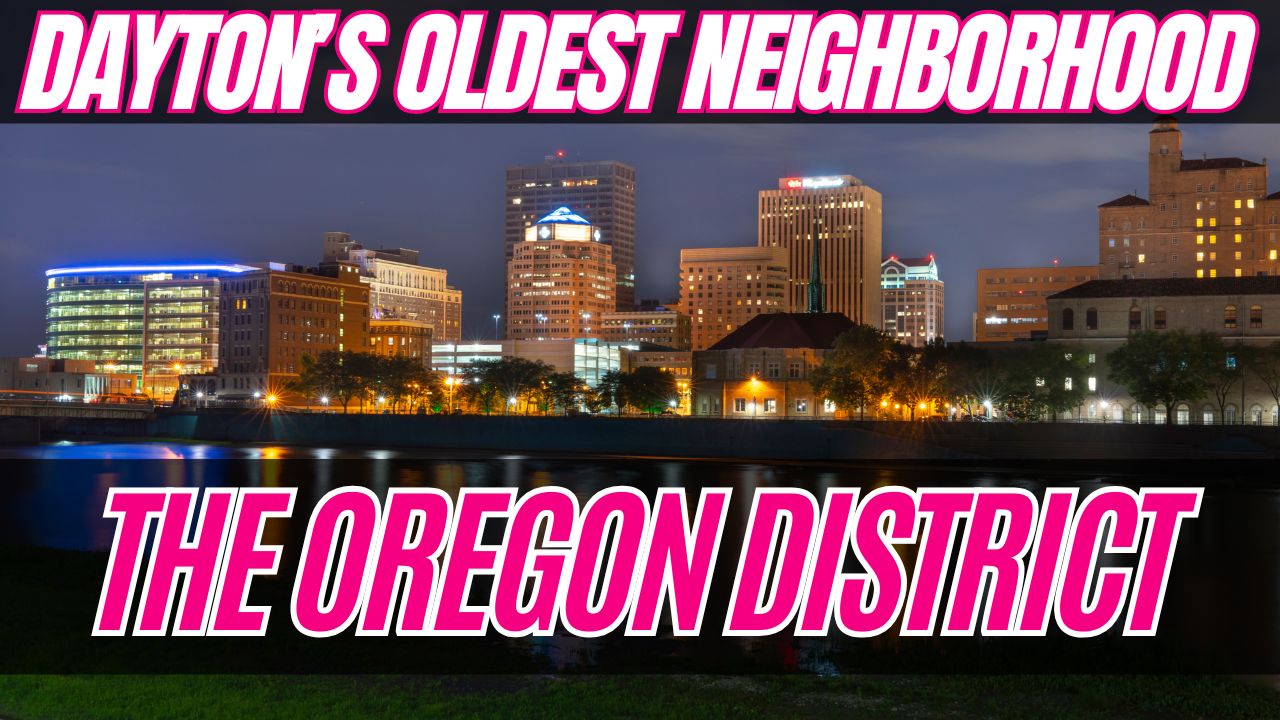The Oregon District: Dayton’s Oldest Neighborhood
Today, we’re exploring the Oregon District, Dayton’s oldest neighborhood. This area has been part of the city since its founding and has transformed from a small settlement to a thriving cultural hub. Let’s dive into its history and what makes it special to the Dayton Community.
Oregon District Early Beginnings
The Oregon District traces its roots to April 1, 1796, when a group of settlers led by surveyor Israel Ludlow arrived at the confluence of the Great Miami and Mad Rivers. These pioneers were among the first wave of people moving into the Northwest Territory after the 1795 Treaty of Greenville secured peace with Native American tribes.
The land that became the Oregon District was originally part of Dayton’s first city plan. Located just east of downtown, the area was slow to develop due to frequent floods, disease, and the rugged wilderness. By 1805, Dayton had only 100 residents, and the Oregon area remained mostly farmland with a few scattered cabins.
The name Oregon first appeared in the early 1800s, but its origins are unclear. Some believe it was named after the Oregon Trail, though the timeline doesn’t quite match. Others think it comes from the Latin word “orgon”, meaning boundary or shore of a river. Regardless, by the 1830s, the Oregon District was becoming an established neighborhood, thanks to the completion of the Miami and Erie Canal in 1829. This canal turned Dayton into a key trading hub, linking it to Cincinnati and the Ohio River.
Growth and Development in the Oregon District
During the 1830s and 1840s, the Oregon District became a distinct residential enclave for Dayton’s growing middle and upper class. The 1833 Dayton Flood devastated much of the city, but the Oregon District, built on higher ground, escaped the worst damage. This boosted its appeal as a desirable place to live.
By the 1850s, a wave of German and Irish immigrants arrived, adding to the district’s diversity. These new residents opened breweries, shops, and taverns, laying the groundwork for the bustling commercial vibe that still exists today.
The Industrial Boom (1870s-1900s)
After the Civil War, Dayton’s economy boomed with industries like National Cash Register (NCR) and the Barney and Smith Car Company. The Oregon District saw a shift from being just a residential area to a mix of homes and businesses.
East Fifth Street became a thriving commercial strip, filled with saloons, theaters, and shops catering to the city’s working-class residents. The Oregon District became a lively and diverse part of Dayton.
Decline and Revival
The Great Flood of 1913 devastated Dayton, but once again, the Oregon District’s higher elevation spared it from the worst damage. However, the mid-20th century brought new challenges. After World War II, many middle-class families moved to the suburbs. Large homes in the Oregon District were converted into boarding houses, and Fifth Street’s businesses turned into bars, pawnshops, and flophouses.
By the 1950s and 60s, the area was struggling. Property values dropped, and the district developed a rough reputation. Disinvestment and redlining made things worse, leaving many historic buildings neglected or abandoned.
A New Chapter (1970s-Present) & Historic Society
The 1970s marked the beginning of the Oregon District’s revival. As part of Dayton’s Bicentennial celebration, there was a national push for historic preservation. In 1974, the Oregon District was added to the National Register of Historic Places, recognizing its 19th-century architecture.
Young professionals and artists, drawn by cheap rents and historic charm, began moving into the area. The Oregon Historic District Society formed to protect buildings from demolition and encourage restoration efforts. By the 1980s, Fifth Street transformed into a nightlife hub, with bars, restaurants, and boutiques bringing new life to the district.
The Oregon District Today
Today, the Oregon District is one of Dayton’s most vibrant and walkable neighborhoods. It is home to a mix of historic architecture, trendy shops, art galleries, and top-rated restaurants. Some of the most popular spots include:
- The Dublin Pub 🍀 – One of the best places for Irish food and live music.
- Salar Restaurant & Lounge 🍽️ – A top choice for upscale dining.
- Blind Bob’s 🎸 – A lively bar with local music and great food.
- Trolley Stop 🍻 – A classic pub with a friendly neighborhood feel.
- The Neon 🎥 – An independent movie theater showcasing unique films.
One of the most historically significant streets in the district is Tecumseh Street, established in 1839. This street features some of Dayton’s oldest surviving homes, built by middle-class merchants and artisans. These modest brick houses date back to the 1830s and 1840s, making them some of the most well-preserved early homes in the city.
One of the Oregon District’s oldest homes is the Thomas Klep House, also known as the James Brooks House. Built between 1831 and 1832, it remains one of Dayton’s longest-standing residences.
Why Visit Dayton’s Historic Oregon District?
Whether you love history, great food, or nightlife, the Oregon District has something for everyone. As Dayton’s oldest neighborhood, it blends the past and present, offering a one-of-a-kind experience in the Miami Valley. If you’re in the area, take a stroll down Fifth Street, grab a bite to eat, and enjoy the rich history of this iconic neighborhood.
If you’re thinking about moving to the Greater Dayton Area, Team MVE can help you find the perfect home. Contact us today!
Jonas Helbert – 937-626-4181
Katie Masters – 937-901-8177
Email – mve@streetlightrealtors.com
If you enjoyed this article, be sure to check out more from The Miami Valley Experience! 👍
Follow us on all our socials:
SLR Experts


Streetlight Realty is located in Washington Twp, OH, and serves the entire Miami Valley. Whether you are looking to buy or sell real estate, we have experts who can assist you in the process. You can call Jonas Helbert at 937-626-4181 or Katie Masters at 937-901-8177 with any Real Estate questions. We are here to help!

